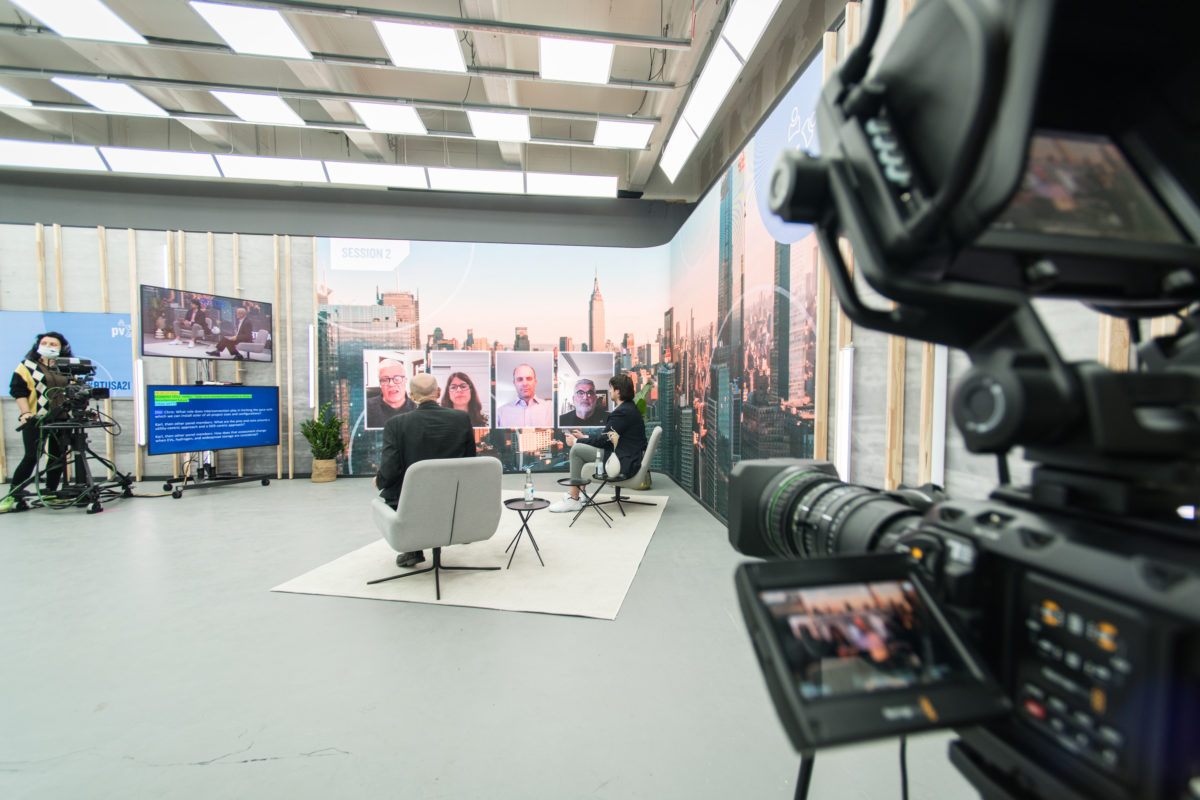Solar industry leaders from across the United States and the globe gathered in an informative and especially timely virtual event as the pv magazine Roundtables USA took place on November 9.
As the U.S. and global solar markets rapidly recover from disruptions caused by the Covid-19 pandemic, a vision of optimal, resilient solar PV solutions to speed decarbonization and tackle the existential climate challenge was shared. Through a total of six hours of curated sessions that were moderated by Senior U.S. Editor David Wagman, U.S. Editor Tim Sylvia, global Editor in Chief Jonathan Gifford, and Associate Editor Ryan Kennedy, equipment manufacturers, researchers, policymakers, and other stakeholders shared their view of how to accelerate deployment in pursuit of national and global goals.
Watch here:
Session one: Solar resiliency in an age of extremes
Karla Loeb, a member of the board of directors and the distributed generation chair of the Solar Energy Industries Association (SEIA) got things started with a spotlight on solar PV resiliency in an age of extremes. Under a shifting climate, disasters like what was witnessed in the winter storms of Texas, and Hurricane Ida are expected to persist in the future. A redefined grid, one that not only cuts climate-fueling carbon emissions, but one that is resilient to the weather events of our future is paramount.
Loeb shared, “We need energy where people live, not just in areas that support our industrial processes.” A distributed energy grid is less exposed to localized disasters and is better able to store, deliver, and perform auxiliary grid services under extreme events, including weather events and national security emergencies.
Her talk was followed by a panel featuring experts from Sandia National Laboratories, PV Evolution Labs, Enduans Solar, and VDE Americas. Under the moderation of Tim Sylvia, they shared strategies in bolstering PV’s defense from wind, hail, heat, fire threats, and more. We learned about the evolution of system components in an environment of increased risk, and how shifting risks due to environmental change factor into project insurance assessment.
An illuminating presentation was given by Claire Kearns-McCoy, senior project manager and solar engineer with Clean Energy Associates. Kearns-McCoy explained how electroluminescence (EL) imaging can be used to evaluate the quality of electrical contacts in solar cells.
Popular content
She advocated for the use of EL imaging early in the installation process for field-based quality assurance. EL can provide a visual check for damage, defective modules, and proper installation techniques. Multiple steps of EL checks throughout the process can allow for problem remediation before an issue is widespread.
Next up was a deep-dive into module reliability from Hongbin Fang, director of product marketing with module-maker Longi. He reviewed the component ripple effect onset by the industry shift to larger-format modules. He shared that while adding thicker glass and sturdier frames to large-format modules would decrease microcracking, it would also increase costs and that Longi is instead focused on increasing overall efficiency to make up for some losses in cracking-related degradation.
Fang was joined by a panel that included Pedro Magalhães of Arctech Solar and Ben Damiani of Solar Inventions. With questions from Jonathan Gifford, the three dove deeper into how designs altered and adapted to the new large format. Balance of system issues are emerging, particularly in PV module electrical connectors, which many in the industry are calling for improved standards for safety and reliability.
A second fireside chat led by Tim Sylvia included software gurus Matt Campbell of Terabase and Aron Dobos of Nextracker. The three explored the factors that underly solar system underperformance, and how software tools can enhance performance. The cutting-edge solar project software uses 3D modeling, GIS, and Sim City-like construction simulators to model real-world possibilities, cutting costs and de-risking projects.
The first session wrapped up with a special presentation by Dana Redden, founder, and CEO of Solar Stewards. She explained why diversity, inclusion, equity, and justice need to have a center-stage position in the energy transition. Energy as an industry has a history of injustice along economic and racial lines, and the rebuilding of our energy infrastructure means we are at an inflection point in which we have the opportunity to restructure the way it is built and managed in a more inclusive and equitable way.
This content is protected by copyright and may not be reused. If you want to cooperate with us and would like to reuse some of our content, please contact: editors@pv-magazine.com.



Climate change is a GLOBAL calamity that needs COLLECTIVE GLOBAL GREEN SOLUTIONS, thank you PV Magazine for the GREAT 🏆🌍🌈 efforts in promoting & exposing the RENEWABLE ENERGY SOLUTIONS SECTORS benefits for all Global citizens to SAVE🌍OUR🌍 CHILDREN’S 🌎FRAGILE🔥MOTHER🌍 PLANET 🌏EARTH🌈🌄🌊